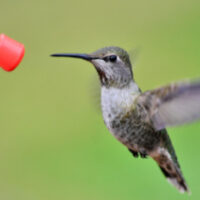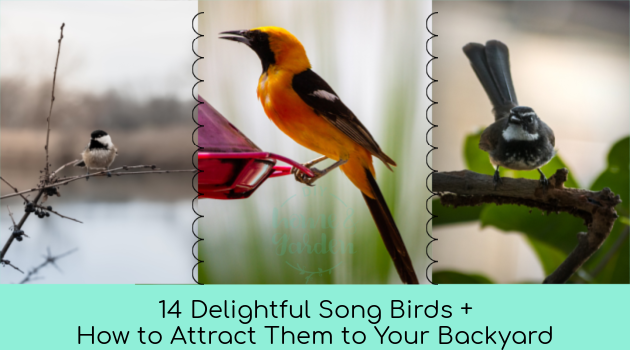Hummingbirds are fascinating little birds that have long beaks and fast-moving wings. They are the smallest migrating birds and don’t migrate in folks like other species; instead, they travel single for up to 500 miles at a time. The most interesting fact about them is that they have a very high metabolism because they eat all day long for their survival. Only females assemble nests and lay only two eggs. After hatching, these birds stay in the nest for about three weeks.
They are unique in various ways, such as they have a giant brain, heart, energy output, and breast muscles compared to any other bird’s body size.
These feathered friends can fly in all directions, such as forward, backward, and even upside down. The average life span of these birds is five years, but they are known to live for more than ten years. They have a grooved tongue like the shape of a W with tiny hair on it to help them lap up the nectar just like cats. They have compact, powerfully muscled bodies and long blade-like wings. Their feathers are sparse and often strongly metallic and scale-like in appearance.
Do Hummingbirds Thrive Near You?
Hummingbirds are found chiefly in the south, central and north America. Most of these species live in the tropics while the rest of the species nest in the United States. There are various species of these birds that are found in different regions.
Some of them are discussed below:
- Rufous Hummingbirds: These beautiful birds breed in open areas, yards, parks, and forests. They reside primarily in the western half of North America and travel from southern Mexico during migration. They are considered as one of the feistiest birds in North America and make one of the prolonged migratory journeys of any bird in the world.
- Ruby-throated Hummingbirds: They live in woodland areas and gardens where there are plenty of plants with flowers. They spend the winter season in Central America, Mexico, and Florida and migrate towards Canada and other parts of Eastern North America in hot weather for breeding.
- Black-chinned Hummingbirds: These birds are generally found in lowland deserts, mountainous forests, and natural habitats. They are seen mainly in Mexico as well as in southern Texas in the winter season.
- Costa’s Hummingbirds: They are primarily found in desert scrub in the Sonoran and Mojave deserts and scrub areas in coastal California. They are short-distant migrants that move as far south as northern Mexico in winter.
- Green-breasted mango: These birds are widespread in the American tropics and range as far north as northeastern Mexico. They are mostly found near the coasts of Mexico and Central America. They primarily occur in open lowland habitats, including grasslands, parks, forest edges, and gardens.
- Allen’s Hummingbirds: These birds live in a narrow strip of habitat along with coastal Oregon and California. They often migrate to a small area in Mexico for the winter.
- Violet Crowned Hummingbirds: These tiny birds are found in a few sites in southeastern Arizona and extreme southwestern New Mexico.
7 Things You Can Do to Attract Hummingbirds
Attracting these lovely creatures is very easy when you start thinking like them. There are several tips that you can do to attract these tiny birds as well as a variety of butterflies. Some of them are:
1 – Hang a Nectar Feeder
Hanging a proper nectar feeder is very important for feeding hummingbirds. To make an appealing feeder, place it under a tree or shade of a large bush, canopy, or overhang from the house. They must be hung high to save them from cats and other predators. To protect the nectar from being harmful, place the feeder in a place that gets a mix of sun and shade all over the day. You can also hang multiple and larger feeders with more great reservoirs and plenty of feeding pots to attract many birds. The most important thing about the nectar feeder is that you must keep it clean to avoid the nectar from being sour or clogged with debris or mold.
2 – Keep the Birdfeeder Supplied with Fresh Nectar
The best way to attract this beautiful creature is to put fresh nectar in the feeder. If you prefer homemade nectar for these birds, it is an excellent choice. However, suppose you want to keep the nectar last longer, fill the feeder with sugar water and place it outside. Feeding these birds is a perfect way to let them visit your backyard. You can store extra nectar in the coldest part of the fridge to feed these birds with fresh nectar every time. Commercial nectar often has unnecessary flavorings, red dyes, and preservatives, so it is better to use homemade nectar. A more robust nectar solution provides more incredible energy during migration, especially when birds need to build up their reserves.

How to Make Hummingbird Nectar
Sure, you can purchase hummingbird nectar. But it gets expensive, and it's easy to make it in your kitchen.
Materials
- 1 cup of plain white sugar
- 4 cups of hot tap water
Tools
- sauce pan
- wooden spoon
Instructions
- Put the sugar in a sauce pan, then add the hot tap water.
- Place the pot of nectar on the stovetop and heat through for three minutes on high heat, stirring constantly. This process helps prevent the sugar from fermenting in the feeder.
- Let the nectar cool. Add to your hummingbird feeder.
Notes
Never add dyes to the nectar, it does not benefit bird health.
If this makes too much for your feeder, halve the recipe - always use a 4 to 1 ratio in the summer
3 – Plant Red Flowers
Why should you plant red flowers around the birdfeeder, and why do red birds attract towards red color more? The answer is that red is their favorite color. If your garden contains red flowers, then these birds will be more attracted. They usually like red bee balm, coral bells, bleeding hearts, and cardinal flowers. The red feeder is also a rich source of food for these birds.
In particular, these teeny bids enjoy the butterfly bush. It is like a bonus planting…it attracts both hummingbirds and butterflies. This flower will grow in partial shade to full sun and doesn’t mind the heat.
4 – Plant Shrubs near Feeding Area for Protection
If you want to bring these birds to your backyard, you must consider planting a perennial garden. Plant trees and shrubs near the feeder, give these tiny birds a place to rest and shelter from predators and different climate changes. There are a number of shrubs that you can plant in your garden to attract these birds. Some of them are potentilla, spirea, viburnum, and crape myrtle. These plants are beneficial for these birds, and they both have a mutualistic relationship as plants protect the birds. So it is essential to add these to your garden.
5 – Add a Bird Bath to Your Garden
The birdbath is filled with water and placed in a garden for the birds to bathe in as water helps to keep a bird’s body cool from both inside and outside. The orange birdbath is best for hummingbirds as it will attract more feathered friends towards your backyard. As bird watching is a very recreational activity, you must try to make them visit your garden.
Hummingbirds need to preen to keep their feathers in top shape, and for this purpose, they choose to use the birdbath. You must place the birdbath in the shade, and it must be 1 to 3 inches deep with sloped sides. Avoid making it from concrete as it gets cracks in freezing weather. The birdbath is totally worth it. Usually, grey, brown, and green color is used for birdbaths.
6 – Clean the Feeder Often with White Vinegar
Using white vinegar to clean the feeder is the easiest and natural way as it is an excellent alternative to dish soap. If your feeder is not clean, then these birds will not visit that place. Feeding birds is a magnificent gesture, but you must keep feeders clean and fresh for that. This is the most effective way to eliminate mold and bacteria from the feeders. Just scrub the feeder with a brush, then fill it with hot water and vinegar. Let it soak, and then rinse it. After that, dry it properly, then fill it again with water for the birds.
7 – Protect Hummingbirds from Predators
It is very important to take steps to protect these beautiful birds as they are at risk from predators and other warnings. You can follow the below-mentioned suggestions to keep them safe:
- Set a cleaning routine of the birdfeeder as it is very important to keep it clean all the time to avoid the attack of predators.
- Provide sheltered perches for these birds so they can’t be exposed to predatory creatures.
- You must position your bird’s feeder to avoid predators. Place the feeder within 15 feet of shelter as it will reduce the chances of a cat or dog attacking it.
- Keep your cats indoors so that they cannot stalk these birds.
- Place baffles above and below feeders and put them away from areas where predators can easily reach.
 The Takeaway: These Seven Science-Backed Tips Can Help Attract Hummingbirds
The Takeaway: These Seven Science-Backed Tips Can Help Attract Hummingbirds
Above mentioned tips will surely attract these feathered friends to your garden. They have adapted pollinators as they play an essential role in pollination. They also have a long history of folklore and symbolism in native cultures. By following these tips, these birds will surely visit your place. Watching hummingbirds in your garden gives an aesthetic view that freshens your mind. It helps to understand their biological behavior and to implement habitat management practices. You can easily keep them in your garden if you meet their basic needs for food, water, and space by planting their habitat in the garden.
Content last updated 05.10.2022

free banner from Copyscape

